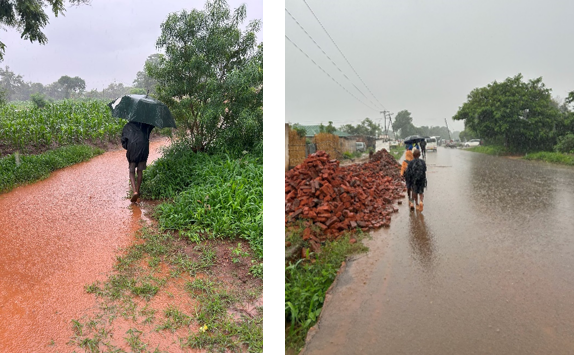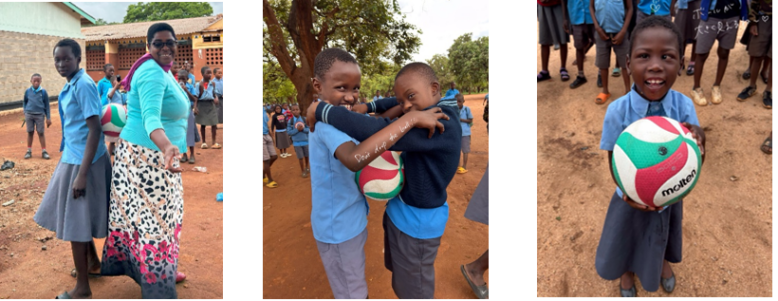
As Japanese people, we experience four distinct seasons, which create a balanced climate and a certain predictability in our seasonal awareness. On the other hand, countries like Malawi have their climate neatly divided into two seasons: the dry season and the rainy season.
The dry season runs from approximately April to October, which is a time for growing crops and harvesting, while the rainy season lasts from November to March, allowing for the growth of plants.
During the rainy season, a significant amount of rain falls. How do the local people, especially children, live during this time? Once again, we’ve received information from JICA volunteer Kimura san!
Rainy Season in Malawi
It rains almost every day. The paths to school are filled with puddles. Everyone is wearing sandals instead of shoes for school. When it rains, fewer children go to school. The temperature is around 20°C, which feels a bit chilly. Some people even wear down jackets. While the rain might bring a gloomy mood, farmers are happy because the rain allows maize (corn) to grow well.
The rainy season is also the time for harvesting mangoes, pineapples, and avocados. At the roadside markets, you can buy fresh vegetables and fruits for about 100 yen.
School Situation
The school where Kimura is stationed has a special support class. There were no physical education classes in the support class at school. However, it is very beneficial for health to engage in physical activities and sweat. Kimura reports that the students use balls brought from Japan to play and engage in activities together on the school grounds.



